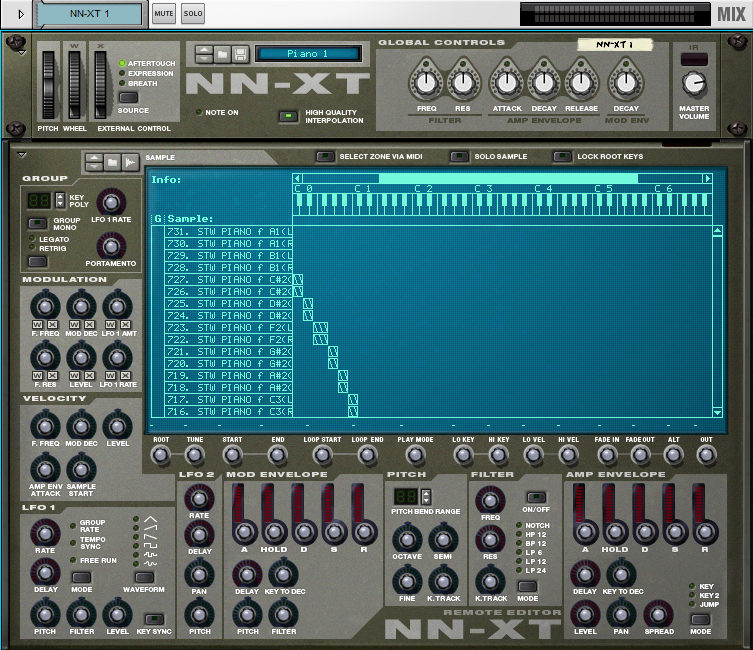Gm Soundfont Sf2
Audio playback is provided by MuseScore's onboard, which houses a large selection of virtual (or software) instruments—including percussion and sound effects. MuseScore supports virtual instruments in two formats: • (.sf2/.sf3): A single file containing one or more virtual instruments. • (.sfz): A set of audio and definition files containing one or more virtual instruments. SoundFonts A Soundfont (.sf2/.sf3) is a single file containing one or more virtual instruments.
As of version 2.2, MuseScore is installed with a SoundFont called MuseScore_General.sf3. This is a GM () set containing over 128 instruments, sound effects and various drum/percussion kits. Note: Older versions of MuseScore are installed with a different Soundfont: MuseScore 2.0–2.1 with FluidR3Mono_GM.sf3; MuseScore 1 with TimGM6mb.sf2.
Uilson kolin okkuljtizm. With the eligibility of the worldwide actor of the sector, it continuously renews its technology and extends its know-how in order to provide optimum solutions for the changing dynamics.
General Midi SoundFont (SGMv2.01-NicePianosGuitarsBass-V1.3). Modified for sf2 by J.N.(https://sites.google.com/site/soundfonts4u/)}.
GM (General MIDI) is a universal format, so once your score is set up for correct playback using MuseScore's native Soundfont, you should be able to it in a of your choice and have it play back on any other user's computer. Many different Soundfonts are available on the Internet: some free, some commercial.

For a list of free soundfonts, see. Install a SoundFont After finding and decompressing a SoundFont (see →), double-click to open it. In most cases, the SoundFont file type will already be associated with MuseScore, and MuseScore will start and a dialog will appear asking if you want to install the SoundFont. Occasionally an application other than MuseScore will be associated with the SoundFont file type; if this is the case, you will need to right-click or control-click on the file, so as to display a menu from which you can choose to open the file in MuseScore. In either case, when the dialog appears asking if you want to install the SoundFont, click 'Yes' to place a copy of the SoundFont file in MuseScore's SoundFonts directory. This directory can be viewed or changed in MuseScore's Preferences, but the default location is: • Windows:%HOMEPATH% Documents MuseScore2 Soundfonts • macOS and Linux: ~/Documents/MuseScore2/Soundfonts In contrast to user-added SoundFonts, the initial default SoundFont installed with MuseScore is located in a system directory, meant only for that purpose, which should not be modified.
This directory and its default SoundFont file is: • Windows (32-bit):%ProgramFiles% MuseScore 2 sound MuseScore_General.sf3 • Windows (64-bit):%ProgramFiles(x86)% MuseScore 2 sound MuseScore_General.sf3 • macOS: /Applications/MuseScore 2.app/Contents/Resources/sound/MuseScore_General.sf3 • Linux (Ubuntu): /usr/share/mscore-xxx/sounds/MuseScore_General.sf3 (with xxx being the MuseScore version) Uninstall To uninstall a SoundFont, simply open the folder where its file is installed and delete it. SFZ An SFZ consists of a bunch of files and directories, an SFZ file and a bunch of actual sound files in WAV or FLAC format, with the SFZ file being a text file that basically describes what sound file is located where and to be used for what instrument and pitch range. Note: For full support of SFZ, MuseScore 2.1 or later is need, prior versions had only limited support, namely for Salamander Grand Piano Install an SFZ After downloading an SFZ (see →), you need to manually extract all the files that belong to the SFZ (the SFZ file itself and all the subdirectories) into the directory listed. Leave the subdirectories and their contents as they are. Uninstall To uninstall an SFZ, simply open the folder where its files are installed (see ) and delete them all.